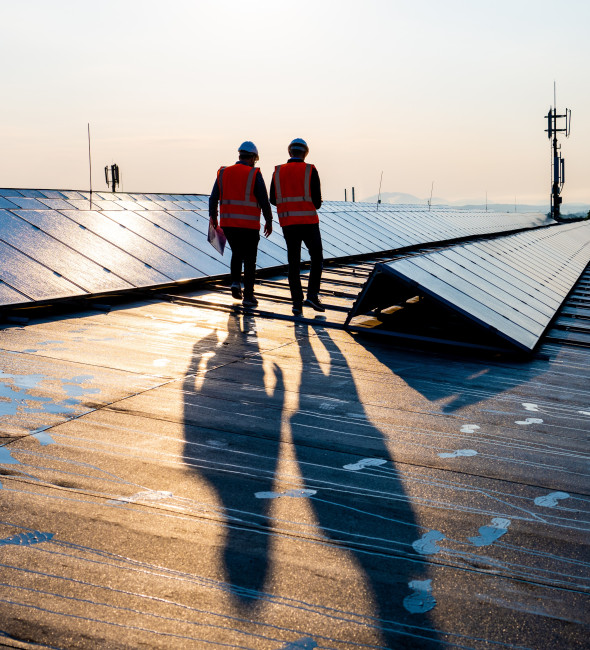
Photo by UN Climate Change - Kamran Guliyev
A closer look at the financial system
The financial system can accelerate the transition to a sustainable economy
Aligning the financial system to a resilient, net-zero economy is a principle enshrined in the Paris Agreement, and a great enabler of transition in the real economy.
Every day, governments, financial institutions and companies make financial decisions that maintain and expand an unsustainable economy or replace it with a sustainable one. They either build and maintain physical assets and implement land-use changes that emit greenhouse gases (GHGs) and degrade nature, or create a sustainable, resilient economy compatible with a stable and livable climate. Either option requires vast amounts of physical infrastructure, backed by equally vast pools of capital from the financial system.
Leaders in both the public and private sectors are needed to shift the financial system.
There is no substitute for government support. They must invest in the decarbonized economy, regulate and price GHGs and other environmental harms, and protect and include marginalized people. Government actions can also ensure that the rules of the financial system take climate and equity into account.
Business leaders must also show ambition. They can commit to targets, strategies, innovations and capital plans that align with climate goals, seizing the opportunity to create a sustainable, net-zero carbon economy within 30 years.
Ultimately, however, financial markets allocate financial resources based on expectations about the future. If financial institutions believe a high-carbon future is the riskier path, with less economic opportunity than a sustainable alternative, they will shift more capital into a sustainable, decarbonized economy. This will make financing high-carbon activities more expensive, or even impossible. The financial system will shift when public and private economic leadership changes those expectations.
Capital investment is shifting toward a Paris-aligned, sustainable economy
Market expectations have begun to shift. Capital investment, expenditure to build new real assets or operate and maintain old ones, is now at an inflection point. The International Energy Agency (IEA) expects capital investment in the low-carbon economy — from clean power, clean fuels and carbon capture and storage (CCS) to batteries, electric vehicles (EVs), and buildings — to reach $2.2 trillion in 2025, while capital investment in fossil fuel production and power generation is expected to reach about $1 trillion. The cost of capital for clean energy projects has also declined significantly over the last decade, although rising interest rates have slowed these gains and financing for fossil fuel companies is still relatively cheap. Regulators are also beginning to require climate data be included in the flow of information that underpins investment decisions, further accelerating shifts of capital.
Finance is not shifting fast enough
The world’s financial flows, enabling the capital investments described above, remain off track from securing the future we want.
Climate Policy Initiative estimated a total of $1.9 trillion in public and private climate finance flows in 2023, far short of the $6.9 to $11 trillion needed per year by 2030 in order to prevent the worst impacts of climate change. Similarly, protecting the world’s ecosystems and biodiversity requires $484 billion per year invested in nature-based solutions by 2030 (financial flows totaled $154 billion in 2022).
Climate support from developed countries to developing countries is still only about 90% of the way toward the promised $100 billion a year, and governments are just beginning to consider and track whether their climate investments will bring underserved and/or marginalized communities into the green economy.
At the same time, governments spent $503 billion for fossil fuel subsidies and over $1 trillion for fossil fuel finance in 2021, and private lending for the fossil fuel industry from the world’s 60 largest banks reached $742 billion in 2021.
If financing continues on this track, companies’ planned capital investments in fossil fuels will burst the carbon budget.
The financial system we need
As the green economy grows — and it must grow faster — further capital investment in fossil fuels must be avoided. Existing assets must be rapidly wound down and the financing that backs those investments must dry up. The green economy must also be just and equitable. Additional funds must be transferred from developed to developing countries, and all countries must ensure that growth of this more sustainable economy benefits groups that were underserved and/or marginalized by the high-carbon economy that it replaces.
Action, though accelerating, still lags far behind the rhetoric. The good news is, we know what needs to change and how to do it.


